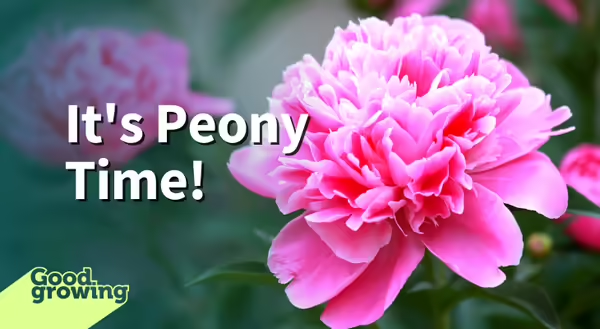
Herbaceous peonies are a common sight in many gardens and some of the most beautiful flowers you will find. They belong to the genus Paeonia which is native to Asia, Europe, and Western North America. They have been cultivated in Asia for more than 2,000 years. These cultivated peonies were brought to Europe and later the United States around 1800. In addition to their beauty, they can be quite long-lived. Many plants have been growing and flowering for more than 50 years, and some plantings have been recorded to be over 100 years old.
Depending on the species and cultivar, peonies will bloom from late spring to early summer (typically starting in early May in central Illinois). Peonies were traditionally white, blush, pink, and red in color. However, due to breeding, coral, yellow, and patterned peonies can now be found. In addition to a wide variety of colors, blooms also come in a variety of different shapes. The American Peony Society recognizes six different types of flowers: single, Japanese, anemone, semi-double, bomb, and double.
If your peonies aren't producing buds and blooming, there are several different things that could be causing this.
- If you planted peonies in the last year or two and they aren't producing flowers, don't be alarmed; it can often take 2-3 years for them to establish and bloom.
- Excessive shade can also lead to poor flower development (peonies prefer full sun and can take some shade). If this is the case, dig up peonies in the fall and place them in a sunny location.
- One of the more common reasons peonies don't bloom is that they are planted too deeply. The crown of the plant should be no more than two inches below the soil surface.
- Over-fertilizing can also reduce the bloom of your peonies. Too much nitrogen fertilizer will cause the plants to produce a lot of foliage and a reduced number of blooms. Established plants with good growth only need to be fertilized every few years, if at all. If you decide to fertilize, do so after they are done blooming and use a balanced fertilizer or one with a higher phosphorous content (middle number).
Despite the old wives' tale, peonies do not need ants to help them flower. Ants are commonly seen on the buds of peonies, and many think that they help pry the flower buds open. Peonies have glands called extrafloral nectaries on their sepals (leaf-like structures that cover the flower before it opens) that release nectar. These are different from the nectaries inside the flower that produce nectar to encourage pollination and provide food for pollinators. It is believed that plants have these extrafloral nectaries to attract beneficial insects. The beneficials, such as ladybugs and ants, will feed on the nectar and protect the plant from pests.
Despite being beneficial, one common complaint with peonies is the presence of ants on the flowers, especially when they are being cut to bring indoors. To get rid of the ants on the flowers, stick the flowers in some water and swish them around. This should remove most of the ants.
Just like roses and many other flowers, it's a good idea to remove flower heads and/or seed pods when plants are done blooming. This will help the appearance of the plants and also prevent the plant from sending energy into producing seeds.
Good Growing fact of the week: In addition to herbaceous peonies, there are also tree and intersectional peonies. Tree peonies are multi-stemmed woody shrubs that grow 3 to 7 feet tall. Intersectional (also referred to as Itoh) peonies are hybrids created by crossing tree and herbaceous peonies.
Signup for our emails! Want to get notified when new Good Growing posts are available? SIGN ME UP
MEET THE AUTHOR
Ken Johnson is a Horticulture Educator with University of Illinois Extension, serving Calhoun, Cass, Greene, Morgan, and Scott counties since 2013. Ken provides horticulture programming with an emphasis on fruit and vegetable production, pest management, and beneficial insects. Through his programming, he aims to increase backyard food production and foster a greater appreciation of insects.